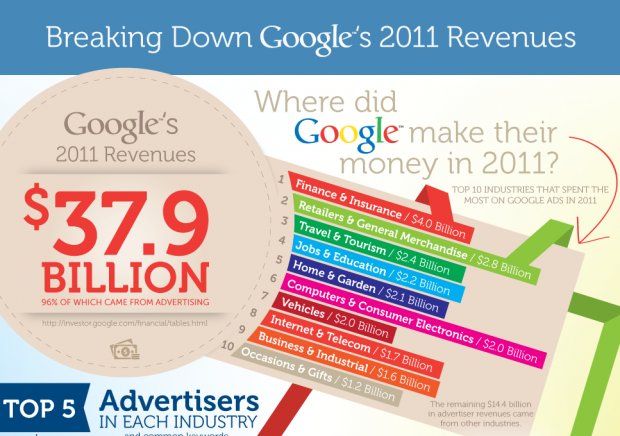This post, with a spotlight on PPC for travel, is part of a series focusing on specific PPC strategies per industry. While the basic components of every PPC campaign are the same, no two are identical. Consult your industry’s guide for tailored tips!
Times have changed when it comes to planning a vacation. These days most people begin their journey with online research. Dreaming, comparing, planning and booking all happen through Google’s portal to exotic places and this is way before anyone has thought to pack a bag.
If you are running a business in travel and tourism or doing marketing campaigns for this industry, you are probably well aware of the importance of the internet for attracting new customers. You are most likely already using social media and Google Ads to promote your services (if not, you have some work to do! Start by reading this article on PPC for beginners). Are you getting the most out of your Google Ads budget?
PPC (pay-per-click) advertising can be tough! If you are struggling with PPC for travel, you are not alone. According to figures released by Google in 2011, travel and tourism is the third highest spending industry when it comes to Google Ads. That’s a lot of competition.
In this article, we will explore six smart, simple ways to improve your PPC strategy. These tips will help you increase your conversions and maximize your digital marketing budget. Who knows? If you get it right, you might earn a holiday for yourself!
1. How to Write Winning PPC Ads for the Travel Industry
One of the nicest things about working in tourism is that you’re selling a product that just about sells itself. Who isn’t dreaming of a holiday? With the enticement of exploration, adventure and leisure all built into the dreams you sell, you should find it very easy to come up with great selling points.
However, don’t forget, this is a cluttered space. There are plenty of bigger companies with more ad dollars to throw at common keywords. Expedia, Priceline’s Booking.com and TripAdvisor are spending millions with Google every year. No need to be discouraged, though. You can compete, but you need to have your wits about you to think about ways you can set your brand apart.
Here are some best practices to keep in mind when writing copy for your travel ads:
- Include the target keyword in the headline
- Include numbers e.g. starting prices for hotels/flights etc.
- Drive urgency by showing deadlines for deals
- Show social proof by displaying the number of travelers you’ve served
- Include a call-to-action e.g. “Book flights now”
For example, Expedia’s ad copy ticks several boxes by showing how many hotels are available, the benefits of booking with them, and a simple “Book now” call-to-action:

In this next example, Finnair used Google Ads as an opportunity to highlight their premium airlines, focusing on travellers who prefer flying first class:

Your copy should address your target market directly. What makes you stand out and why do people enjoy doing business with you? One of the best ways to find this information is to talk to your customers directly.
2. Be Smart and Specialize
In order to cut past the competition, think about the unique selling points of your product or service. Brainstorm ways to market your business that will use less common keywords that are cheaper to bid on. Create ads that go right to the heart of what your niche market is looking for.
You can do this using the Keyword Planner or a tool like Ubersuggest. Simply type a relevant phrase to uncover hundreds of keyword suggestions for your campaign:
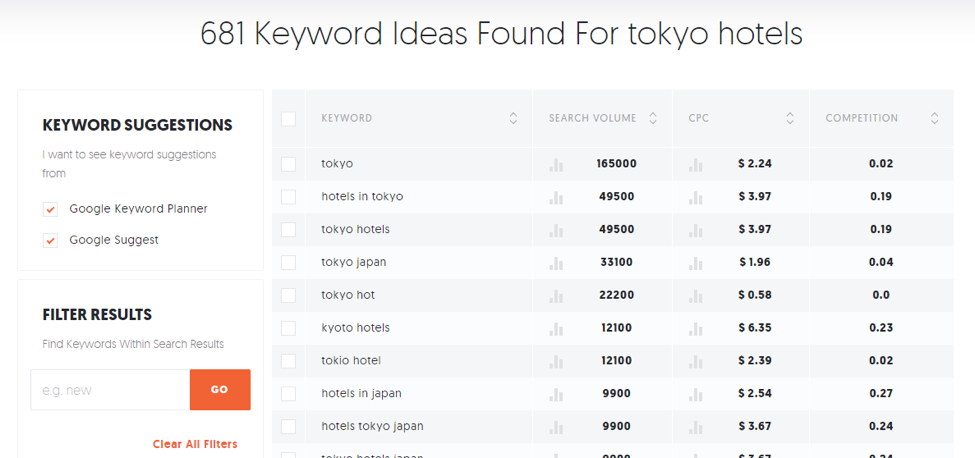
Do you (or can you) offer a specialized tour? Can you promote your product as being accessible for travelers with disabilities? Do you cater to travelers who wish to bring along their pets for their stay? Can you offer a tour or experience that caters to a niche interest such as luxury wine tours or white-water rafting in Costa Rica?
Drill into the detail and differentiate to dominate. After you have figured out what makes your travel offer different, build your ad text, sitelink and landing pages to feature keywords that address this.
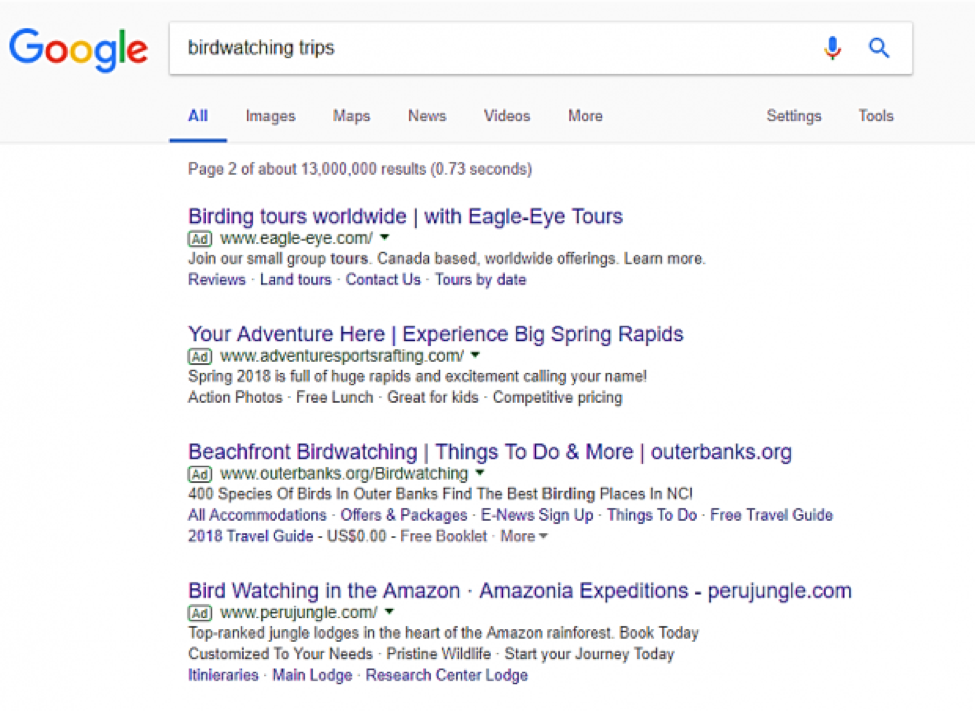
Having a tailor-made landing page is key. For example, Eagle-Eye Tours drives traffic for the keyword “birdwatching trips” to a page offering a handful of relevant experiences:
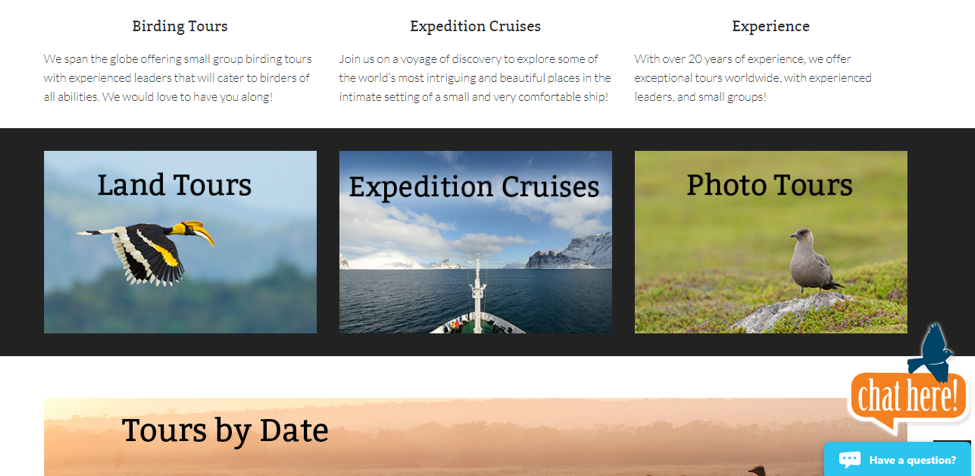
Of course, the more unusual or specialized your niche is, the smaller the audience will be. But don’t be quick to dismiss a small, targeted audience. This group may be highly motivated to buy and will find you first if you successfully push this specialty offering to the top of their search engine results page (SERP).
3. Get With the Season and be Timely
Travel and tourism is a seasonal business. You should already be an expert on your peak seasons. It pays to think a bit more about calendar events. Planning a successful digital marketing strategy means taking advantage of key times throughout the year.
Stay aware of trends and seasonal spikes (e.g. have you run a Black Friday special for your business before? Maybe that’s something to consider). Bid higher on location keywords at times when people are more likely to book vacations (i.e. winter for ski destinations or sunny escapes, summer for camping holidays or road trips.)
For example, Crystal Ski takes advantage of the off-season to offer deals for those thinking about a ski holiday during the summer months:

As you can see, they focus on offering great deals to encourage people to take action during slow business periods. Furthermore, they include sitelinks that look to the future (i.e. “Winter 2018/19”) to attract those who know exactly what they want.
Do you run a B&B that suits couples and romantic travel? Then you should be promoting that in the lead-up to Valentine’s Day. Do offer a group history tour that could be marketed as a Halloween activity? By timing your promotions to take advantage of different seasons throughout the year, you are increasing your chances of appearing in front of the right people at the right time.
Speaking of the right people…
4. Get Their Attention by Talking the Talk
A spring break vacation to Cancun PPC ad is aiming at a very different demographic than an over-55’s cruise. By pairing smart timing and using language in your advertising that speaks the language of specific personas (college students versus retired snowbirds, for example) you have a winning combination for targeted marketing. Catch their attention by sounding like them in your ad copy and landing pages. Use headlines that feature keywords plus jargon that is relevant to the specific demographic you are trying to reach.
For example, a family wants savings for groups, safety and entertainment for their kids, as well as activities and relaxation for the parents. Use these ideas to craft ad campaigns that will cut-through offers targeting family tourism. On the other hand, you should be using a completely different set of ideas if you are targeting the bachelor(ette) party getaway market or the eco-tourism market.
In the example below for the term “ibiza holiday packages,” Travel Republic used phrasing such as “fantastic bargains” and “all inclusive” to attract their ideal audience (travelers in their late teens and early-twenties):

A great way to get inspiration is to look at the landing pages of your competitors. The bigger the brand is, most likely (but not always) the better their ads, so take a look at how the airlines, hotel websites and travel agents in your field market target the demographic, and you will soon get the idea. With a bit of thoughtful research and clever planning, you will soon be writing ads like the pros.
5. Deliver a Deal
Everyone likes a deal and chances are, your customers are googling to find one. Even at the luxury end of the travel market, nobody is above a little sweetener. If you have an offer up your sleeve, great. If not, think of how you can create an offer, as this might be the very thing that tips them over to purchase.
For example, Kayak used discounts and pricing as the leading hook for the following ad:

They use specific discounts (Save Up To 20%) and talk to the pains of their audience (overpaying for flights). This attracts budget-savvy travelers while standing out from their competitors.
Don’t underestimate the power of prices in travel ads to catch the searcher’s eye. If you have a good offer that you can promote or if you can think of a way to break down your costs into parts, then use price sensitive CTAs (like in the example below).
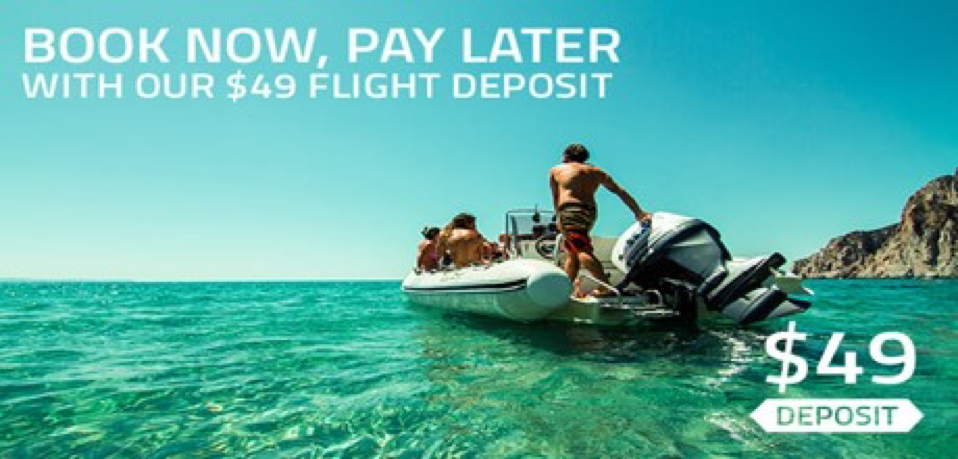
By offering a good price you can generate urgency with your call to action. This will motivate people to take action and book. For example, Book Now and Save! or Reserve Now to Get This Price uses language that pushes the customer to react quickly.
6. A Change is as Good as a Holiday. Take Advantage of Ad Customizers.
Ad Customizers are a feature of Google Ads that allows you to change details in your PPC ads dynamically. It saves you time and work by letting you manage quick changes to your PPC ad campaigns by entering the changes in a spreadsheet and uploading it to Google Ads. This will make the updates across your campaigns without you needing to change each one by hand.
Some details you can change with Ad Customizers include:
- Price
• Seasonal sales and last-minute deals/discounts
• Countdowns (days, minutes left before the offer expires)

7. Be Trusty and Become Preferred
Let’s face it, booking a trip requires parting with money. To encourage your customers to part with their hard-earned cash and trust your website with their credit card details, you are going to have to convince them that you are trustworthy.
Providing proof is important. Testimonials and social media reviews play a big part in this. Awards, badges and authority from being a member of a recognized association or being endorsed by a respected publication (“Top 10 New York Times Places to Visit” “Lonely Planet’s Best Hostel in Cambodia”). Feature these on your landing pages to build confidence and test them in your campaigns.
In the example below, Sea Kayak Adventures build trust by showing how long they’ve been in business. As you can see, there are three mentions of their experience and age of business:

Neilson use their ad copy to show how they’re “ATOL protected” – a key consideration for novice and advanced rock climbers when looking for package deals:

Boost your own social proof by including information that reduces anxiety: number of travelers served, year in business, and any regulatory status helps put skeptical minds at ease.
8. How to Know if You Are Winning at PPC for Tourism?
As a travel marketer, you need to test your ads to discover which combination of tactics is getting you the best results. But, it’s very difficult for any business to really know how they are stacking up against the competition.
To make it easier for you to assess your PPC performance, Acquisio has compiled their research and analyzed the latest industry benchmarks. Our research reveals the average CPC (cost per click), CTR (click through rate), CPA (cost per acquisition) and CVR (conversion rate) for the Travel and Tourism industry. This can give you an idea of what you should be aiming for with your digital marketing campaigns.
Good luck and bon voyage!
Image Credits
Feature Image: Unsplash / rawpixel
Image 1: via Wordstream
Image 2-3, 5, 7-9, 12-13: Screenshot via Google SERPs
Image 4: via Ubersuggest
Image 6: Eagle-Eye Tours
Image 10: via Kayak
Image 11: Via AdWords

